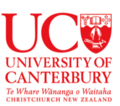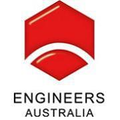Preparing your Presentation for ATNAC 2013 or 22 ITC SS EEGN
Sessions have been planned to allow 25 minutes per presentation. 18 - 20 minutes are allocated for the delivery and 5 - 7 minutes for Q & A discussions and changeovers. Please plan your presentation to fit these parameters. PowerPoint or pdf delivery will be acceptable, for normal delivery of a talk we would expect your talk to consist of at most about 15 - 18 slides:
The following is an extract from a series of 4 booklets prepared by the IEEE to guide it's members in preparation of technical presentations, it contains some useful hints:
"An introduction, opening, body and conclusion comprise the four major parts of a successful presentation. The introduction sets up your presentation by identifying the tone of your message, highlighting the importance of the subject matter and establishing your credibility. The opening provides a preview of the presentation by drawing the audience’s attention to your presentation, conveying your core message and defining an outline of the upcoming points. The body is the heart of your presentation.
The body defines your main points with appropriate, detail and supporting material. The body may incorporate rhetorical devices while maintaining a focus on simple, clear language to maximize comprehension.
Finally, the conclusion summarizes your core message, recaps your main points and challenges the audience to take action.
With these four components, you can create effective presentations to persuade, inform or share information."
REFERENCE: "Technical Presentations. Book 2 Structure - Anatomy of a Successful Presentation", IEEE USA E-Books.
Submission Guidelines for the Final Versions of Accepted Papers
Preparing the final version of your paper, it is important that you address all relevant critical comments of reviewers. Please prepare your camera-ready paper using the standard IEEE templates available from here. The templates are the same as for initial submissions.
All camera-ready papers should be in PDF format and submitted via EDAS. Please log in into EDAS, and click "copyright" in the row with your paper. Complete the copyright form and begin uploading the final version of your paper. To help ensure a smooth and accurate pdf submission process, we suggest you add the following guidelines to the final submission page of the conference website. Thus, the authors will be aware of these guidelines and make the necessary changes before submitting their final paper. For final manuscripts:
- if you are using Microsoft Word, then use its most current version, as it will help reduce word-to-pdf conversion issues such as embedded fonts, bookmarks, etc
- no page numbers and no headers/footers
- a non-zero PDF top and bottom margins (typically, at least 0.5 inches) to help indicate if there are any page numbers.
If you were informed about errors in your PDF file, hints of fixing a given problem can be found here.
All papers are allocated up to six A4 pages in the IEEE conference proceedings. You can submit the seventh A4 page, but it carries an extra charge of NZD200. Papers exceeding seven pages will NOT be accepted at EDAS.
The deadline for the camera-ready submission has been extended to September 15, 2013. To submit your camera-ready paper, please use the templates obtained from here. The templates are the same as for initial submissions.
As it is stated in Registration authors of the papers accepted for 22 ITC SSEEGN should also remember that
- Publication of each paper (regardless whether the paper is authored by a student or non-student) has to be secured by at least one full standard conference registration fee paid by its authors, but a presenter with up to two papers accepted needs to pay one such registration fee only.
- The IEEE reserves the right to exclude paper from distribution after the conference (e.g., removal from IEEE Xplore) if the paper is not presented at the conference. Please see the No-Show Policy for details.
The conference publication chair is Dr Mark Gregory.




